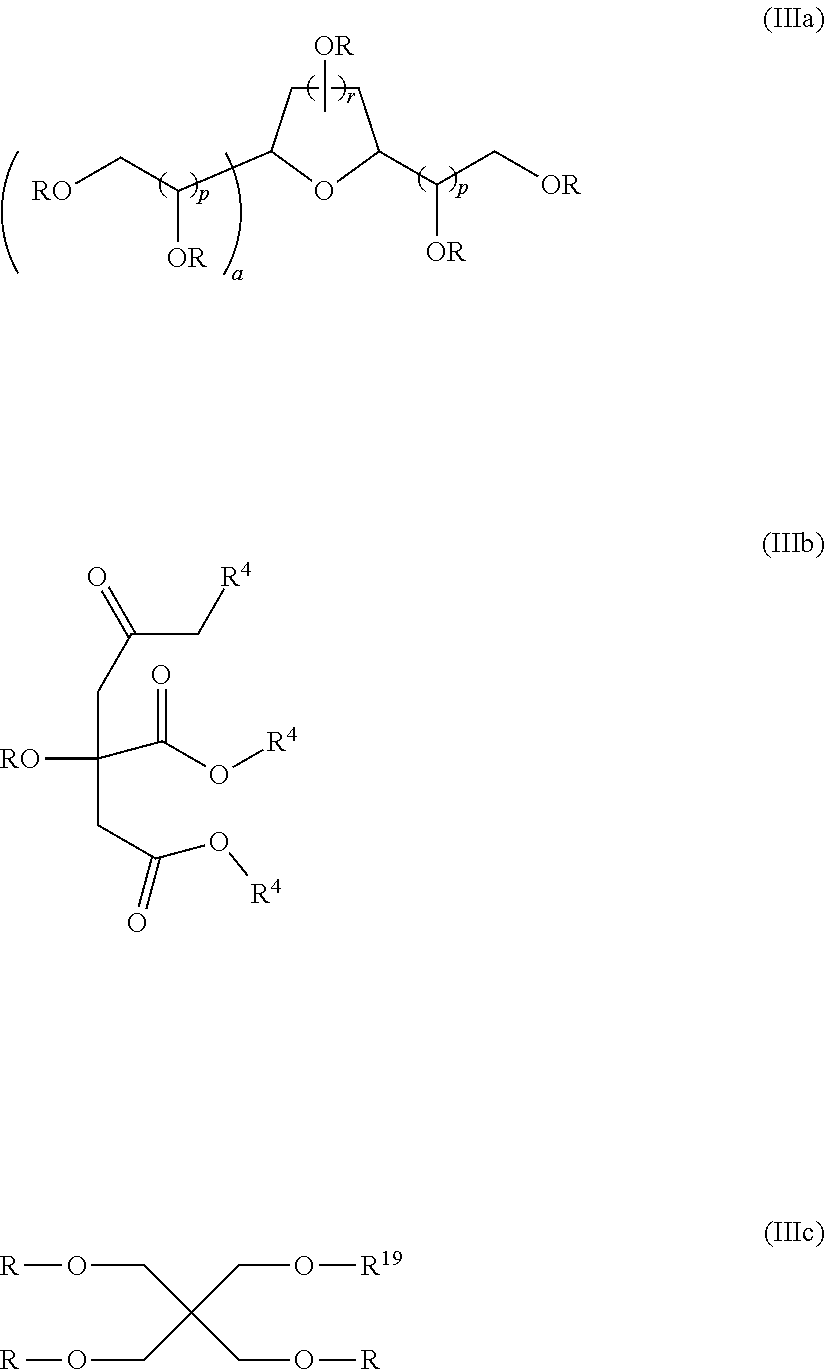Non-fluorinated and partially fluorinated polymers
a technology of polymer mixture and fluorinated polymer, which is applied in the direction of liquid repellent fibres, vegetal fibres, synthetic resin layered products, etc., can solve the problems of less effective than fluorinated counterparts, and achieve the effect of increasing durable water repellency and imparting durable water repellency
- Summary
- Abstract
- Description
- Claims
- Application Information
AI Technical Summary
Benefits of technology
Problems solved by technology
Method used
Image
Examples
examples 1-50
[0124]The core dispersion, shell emulsion, and initiator VAZO 56 (0.04 g) were added into a 30 mL vial according to the amounts listed in Tables 5-6. The vial was capped and a nitrogen line was connected. The reaction mixture was heated to 55° C. and stirred overnight. Samples were filtered and diluted to 10% solids with DI water, applied to fabric, and tested according to the test methods above.
TABLE 4Preparation and Performance of Examples 1-26Cotton PerformancePolyester PerformanceCore IDShell IDWaterOilSprayWaterOilSprayEx.(Amount, g)(Amount, g)DropDropRatingDropDropRating11(10.00)2 (8.33)751007410021(10.08)3 (8.41)75100749032(9.80)1 (8.67)75100749542(9.41)2 (8.33)751007410052(9.42)3 (8.33)751007410063(12.80)2 (8.33)751007410073(12.81)3 (8.35)751007410084(10.00)2 (8.33)751007410094(10.00)3 (8.34)7510074100105(10.99)2 (8.33)7510074100115(11.00)3 (8.35)7510074100126(10.00)2 (8.33)7510063100136(10.15)3 (8.47)7510064100147(10.01)2 (8.33)7510063100157(10.02)3 (8.34)7510074100168(14.6...
example 49
[0125]A 4-neck 500 mL round bottom flask was assembled with thermocouple, mechanical stirrer, a nitrogen inlet, condenser, and gas outlet. The flask was charged with Core 23 (80 g), Shell 4 (41.1 g), and N-(hydroxymethyl)acrylamide (48 wt % in water, 0.43 g). The mixture was sparged with nitrogen for 20 minutes, and VAZO 56 (0.15 g) was added. The reaction was heated to 55° C. and stirred overnight. Product was filtered through a milk filter and tested according to the test methods above, using blue polyester fabric.
example 50
[0126]Example 49 was repeated, using Core 23 (80 g), Shell 4 (82.22 g), N-(hydroxymethyl)acrylamide (48 wt % in water, 0.86 g), and VAZO 56 (0.30 g).
PUM
| Property | Measurement | Unit |
|---|---|---|
| weight % | aaaaa | aaaaa |
| polymer composition | aaaaa | aaaaa |
| core-shell structure | aaaaa | aaaaa |
Abstract
Description
Claims
Application Information
 Login to View More
Login to View More - R&D
- Intellectual Property
- Life Sciences
- Materials
- Tech Scout
- Unparalleled Data Quality
- Higher Quality Content
- 60% Fewer Hallucinations
Browse by: Latest US Patents, China's latest patents, Technical Efficacy Thesaurus, Application Domain, Technology Topic, Popular Technical Reports.
© 2025 PatSnap. All rights reserved.Legal|Privacy policy|Modern Slavery Act Transparency Statement|Sitemap|About US| Contact US: help@patsnap.com



